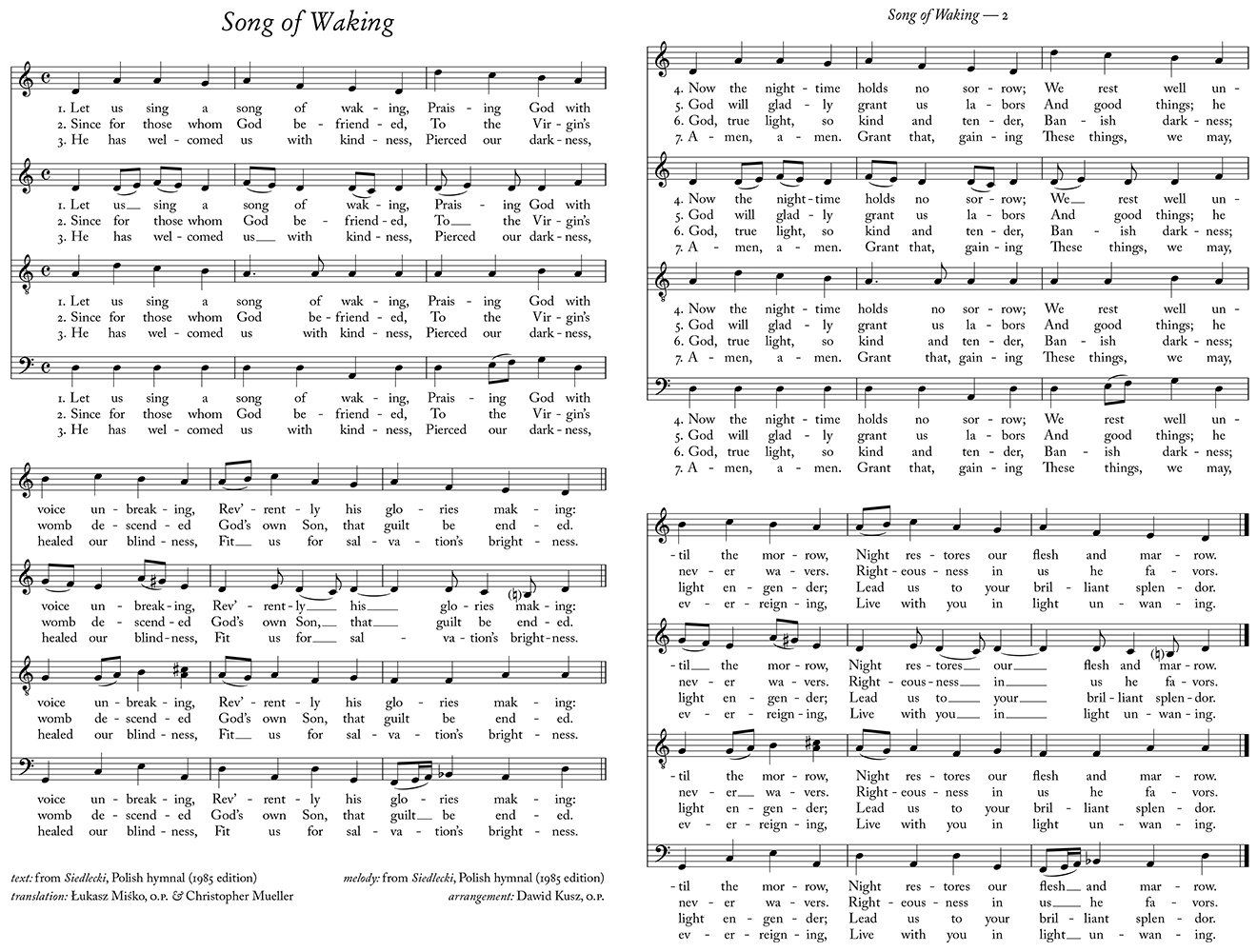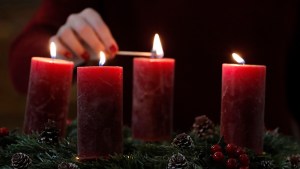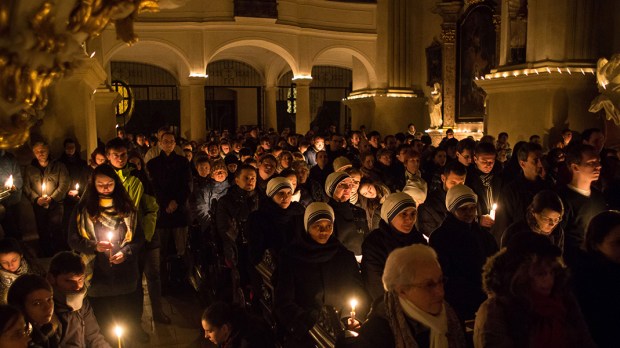If you find yourself traveling around Central and Eastern Europe in the month of December, probably you will not be surprised by Christmas markets featuring a variety of local street foods, sweets, and mulled wine. What you may not know is that every morning before sunrise, way before streets get crowded and vendors open their little shops, local Catholic churches will open their doors and parishioners will flock in for what they call the Rorate Mass. Even with the drastic decrease in religious practices, each Advent morning many Catholic believers in Poland, but also in Hungary, Austria, Czechia and Bavaria, would get up early to participate in this unique Advent practice.
What is a Rorate Mass? Well, in a nutshell it is a votive Mass whose prayers focus on Our Lady, the Annunciation, and her expectation of the birth of her Son. Its name – Rorate – comes from an entrance chant prescribed in the contemporary liturgy for the Fourth Sunday of Advent: “Rorate caeli desuper, et nubes pluant iustum” (“Drop down dew, ye heavens, from above, and let the clouds rain the Just One,” Isaiah 45:8).
The origins and the precise early development of this practice remain unknown. Most probably its roots are in an ancient practice of celebrating the feast of the Annunciation in December – the Christian East would commemorate it on December 18.
Another important tradition of the medieval Church, which probably influenced the later development of Rorate Masses, is the December period of fasting (Ember Days) observed initially in Rome, from where it later spread throughout the Christendom. On the Wednesday of those Advent days of penance that the mystery of Annunciation was meditated upon, a sunrise solemn Mass called Missa Aurea (Golden Mass) or Missa Rorate would be celebrated, and the greatest preachers like St. Bernard would devote their homilies to theological depths of Mary’s fiat and the importance of all believers’ proper preparation for the coming feast of Christmas. Gradually in some countries this practice was extended to the nine days before Christmas, and eventually to the whole season of Advent.
History in Poland
In Poland the Rorate Mass has been celebrated since the 13th century. It was the Hungarian-born St. Kinga of Poland (died in 1292), the wife of prince Boleslaw the Chaste, who most probably brought this practice from her home country. By the early 14th century this Advent Mass was widely popular throughout the Kingdom of Poland, and it reaches the peak of its popularity in the 16th century. That is when special Rorate Confraternities are established, whose chief duty is to celebrate the solemn Rorate Mass not only in Advent but also, at least in some places, every day of the liturgical year. The recent regulations were introduced after Vatican II. Based on them, Rorate Masses are permitted only on weekdays during Advent.
What made these liturgies different is not only the special Marian character of the prayers of the Mass, but also the presence of a special set of candles. As early as in Prince Boleslaw’s days, a menorah was placed on the altar and its seven candles were lit one at a time by different members of the congregation. The king lit the first candle, a cardinal lit the second, followed by a senator, a nobleman, a knight, a townsman and a peasant. As they lit the candles, each man said, “Sum paratus ad adventum Dei” (“I am ready for the Lord’s coming”).
Nowadays some churches, including our Dominican Basilica in Krakow, still use a menorah along with more popular Advent wreathes and four candles, but what every parish most definitely does is encourage the use of personal candles or Advent lanterns, which create a powerful sense of intimacy and community: It is still dark outside at the beginning, the electric lights of the church do not get turned on, and towards the end of the liturgy (long and solemn, fully chanted, with the Gloria in excelsis, incense, altar servers, etc.) the congregation experiences how the darkness is being scattered by the first rays of the sun.
Longing
The theme of longing for God’s presence, powerful symbols and signs of this ancient liturgy like candles and incense, and last but not least, the music — these are probably the reasons why people, many of them high school and college students who often struggle to attend Sunday Mass on a regular basis, find themselves attracted to the discipline of Advent Masses at dawn. Here in Krakow in the non-pandemic years we witness 500-600 people attend the Rorate every morning, and the Mass is at 6:30 a.m.!
Speaking of the music, besides the Gregorian “Rorate caeli” and other chants, there are many traditional (folk/peasant culture) Advent hymns that everybody knows by heart. Along with them, in our Dominican conventual churches and parishes we have developed a repertoire that echoes the traditional beauty and reverence but often employs polyphony. (Listen to our Advent music recordings, Maranatha and Gaudete.)
I think it is this combination of both old and new, united in the spirit of holy longing for God who is holy and transcendent, yet desires to become intimately close to us, that explains why volunteer musicians of all ages provide four-part music for daily Rorate Masses throughout Advent in all our Dominican communities.
To conclude, let me share a rough translation of a 16th-century Rorate Mass hymn, “Let’s All Sing the Bugle Call” (Hejnał wszyscy zaśpiewajmy). It gives you a sense of the emotion that Polish Catholics and other Central European believers experience when they gather before the dawn for the traditional Rorate Mass:
The bugle call let’s all sing,
Let us give honor and glory to God,
Let us pray to him devoutly.
Mighty God from on high,
You are the light of your omnipotence,
Chase the hellish darkness.
Already the night is over,
That oppressed all the world
And originated in sin.
God’s only Son responded,
To bear the darkness and the guilt,
He entered the life of the Holy Virgin …


Read more:
Bishop Barron: Doing some real Advent spiritual work

